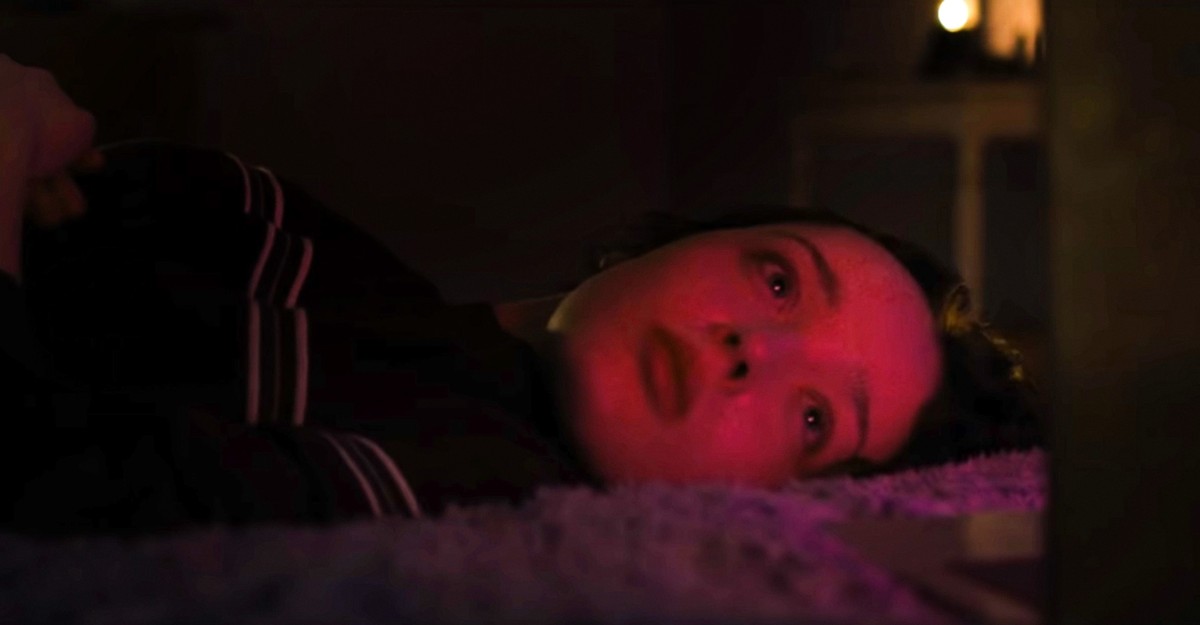Cinemas are pretty much always the best way to watch a movie. The darkened screening room is the ideal place to immerse yourself, distraction-free, in a film’s sound and visuals. That’d be a fine setting for Jane Schoenbrun’s We’re All Going to the World’s Fair, a tale of online alienation that debuted at 2021’s Sundance Film Festival and hit theaters and some streaming services this month. But this release is also the rare case in which I’d advocate for a more intimate viewing experience: at home, perhaps curled up in bed, with your headphones on and this indie horror playing on your laptop.
why? Because We’re All Going to the World’s Fair feels like a weird piece of internet ephemera one might accidentally discover while browsing late at night. The film will resonate with anyone who’s gone down a macabre digital rabbit hole and discovered something as mild as one too many grim Wikipedia articles, or as robustly unsettling as “creepypasta,” a storytelling subgenre that functions as the folk-horror corner of the web .
We’re All Going to the World’s Fair might as well have crawled out of one of those creepypasta-filled forums, where users swap eerily plausible fictions. The film is about a lonely teenager named Casey (played by Anna Cobb) who decides to undertake the viral “World’s Fair Challenge,” an amorphous online game that you enter by stating “I want to go to the World’s Fair” three times on camera and pricking your finger to smear some blood on your computer screen. Then you wait to see how your life changes in the ensuing weeks.
Most of the movie unfolds via Casey’s laptop, as she records updates for her viewers, interacts with other “players,” and films unusual encounters. Once the game starts, the rules are nonexistent, or at least never defined. Everyone’s experience is purposefully different. The idea is simply that the mysterious forces behind the World’s Fair transform the player in some way. Casey watches videos of other users’ supposed misadventures—a man finding an abnormal growth in her arm, another demonstrating symptoms of possession.
The unspoken tension is whether any of the stuff Casey documents and views is actually happening. Good online storytelling should summon that kind of doubt—the amateurish realism needs to at least momentarily make you wonder whether it’s not just a remarkably elaborate lie. The film’s low budget and often grainy video quality is part of that verisimilitude; the trick is one that indie horror has been playing for generations, be it in famed faux documentaries from the 1980s such as cannibal holocaustor ’90s and aughts features with so-called archival footage such as The Blair Witch Project and Paranormal Activities.
We’re All Going to the World’s Fair doesn’t attempt to approach those movies in terms of sheer terror intensity. The scares are slower-burning, such as a faraway shot of someone’s face scrunching into an unnatural rictus grin. Watching this film, I was reminded of the hit YouTube series Marble Hornets, a multi-season amateur affair based on the “Slenderman” online mythos, which mined frights out of shaky camera footage of empty playgrounds and dank hotel rooms. Schoenbrun has spoken about being inspired by the chilling Slenderman stabbing in 2014, in which two 12-year-old girls, motivated by the fictional stories, attacked their friend de ella in the Wisconsin woods and almost killed her; it remains the most disturbing example of how internet fascinations can translate into real-life malevolence.
But what I found even more compelling about the film is that it understands the creativity inherent in any of these social experiments—the unconscious ways in which participants build on one another’s ideas to try to jostle and spook one another. As the plot progresses, Casey immerses herself more and more in the videos of other players, and her own behavior becomes more and more aberrant. Schoenbrun wants the audience to wonder whether supernatural forces are at work, or a mere echo chamber of creepiness. In several scenes, Casey interacts with another World’s Fair superfan, named JLB, an older man who speaks to her using a distorted voice. JLB expresses increasing worry about the directions Casey is going in, even though he remains unsure whether she’s genuinely losing her mind about her.
By framing her characters’ inventiveness with boldly bizarre imagery, Schoenbrun is getting at what makes internet horror such a unique mode of cinema. The viewer is unsettled not just by the content, but by their ambiguous relationship to who’s sharing it. That parasocial relationship is evident in so much online interaction, and the audience’s wavering connection to Casey is what keeps We’re All Going to the World’s Fair captivating all the way to its cryptic end. Are we watching a confessional breakdown or a carefully designed performance? For a chronically logged-on audience, that’s the scariest question Schoenbrun can pose.
.
